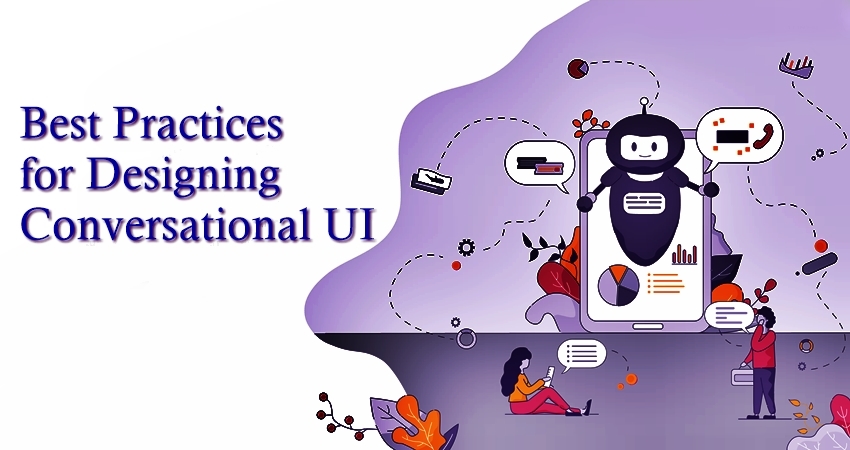Table Of Content

It is the humanizing of technology and technological devices through natural language processing (NLP) and natural language understanding (NLU). As a Conversational Designer, I have to make sure that data is handled responsibly. For example, I’m always making sure the users know if they are chatting with a human or a chatbot. Generally, conversational experiences should be designed to maximize users' well-being, not just their engagement with a screen. Personally, WoZ testing is my favorite part of being a conversation designer and I don’t get to do it often enough. It’s harmless occlusion of fact— you place a user with what they believe is a fully-functioning conversational experience or prototype, but actually it’s you, behind-the-scenes, feeding the bot its lines.
Designing for Privacy in an Increasingly Public World
When users feel like they have to put in a lot of work to carry a conversation, they can feel like the system is not on their side, and is even making things harder for them. Systems that require special knowledge or “computer literacy” place a burden on customers to figure out how they work. When writing sample dialogues, approach them like design mocks — test them out (read them) with real people to see if they make sense, think about edge cases and error states, and iterate based on feedback. The more sample dialogues you write, the clearer your sense of the brand persona becomes. For the last step, writing a sample dialogue is a helpful way to envision your persona in action.
Flow mapping
The above framework contrasts the steps taken for our human brain to understand an utterance with the steps taken when designing a response to an utterance. Like product/UX designers, designers of conversational agents have a responsibility to consider the ethics and implications of their work. As a relatively unexplored field, VUI design relies on the input of diverse stakeholders, from disciplines such as design, psychology, linguistics, screenwriting, and more, to inform its approach. Conversation design (CxD) is about defining the interactions between the user and a conversational agent, based on how people communicate in real life.
Communication Strategy
Conversations are not strictly verbal — think about sending a text message, or passing notes in class. These are also forms of “conversation” where news and ideas are exchanged.
Google Assistant
Voiceflow raises $15M to build the 'Figma' of conversational AI - VentureBeat
Voiceflow raises $15M to build the 'Figma' of conversational AI.
Posted: Tue, 15 Aug 2023 07:00:00 GMT [source]
Conversational design is a design language based on human conversation and translates it into an interaction with the computer through voice, chat, audio, visual design, and more. Conversational design combines multiple areas like linguistics, psychology, and interaction design. Delving deeper into the operational aspects of implementing AI, Deitz highlights the importance of first-party data in training AI systems effectively. In a privacy-conscious era, he advocates for a meaningful value exchange that motivates customers to share their data, thereby enabling brands to understand and cater to their needs more precisely.
Not only did this user answer the question about shoe-type, they also specified the size, in an attempt to find what they want quickly. Expect this kind of behavior from repeat users who know what other questions will be asked. Repetitiveness, complicated setups, and lack of personalization deter users.

Using clear language and ensuring all the information necessary to take action is present in conversations with systems will help create a more trustworthy and satisfactory interaction. Successful interactions feel truthful, offer clear and verifiable information, and prevent confusion. Being truthful in conversation design means ensuring there is a strong correlation between what the user expects and what the system offers. No unpleasant surprises or bait-and-switch tactics that cause distrust. Overly automated messages or recommendations that don’t add value to your users can be damaging to the overall experience.
To prove to you how essential it is to review your chatbot, here are some statistics on chatbot common errors. Conversation Design is an element of UX design, which gauges and improves the user's experience. This UX design principle ensures that the product or service is easy to use and efficient for customers. This is another simple design that simulates human conversation. It is excellent for self-service as it provides a range of options from which you can choose.
About Conversation Design Institute
In short, conversation design is the process of designing customer conversations for your business to optimize the overall user experience. It encompasses both digital and physical interactions with your customers, services, or products. These interactions can include voice assistants like Alexa, smart speakers like Google Home or HomePod, chatbots, or any other digital user interface (UI) that a user could interact with. Conversation design is the practice of making AI assistants more helpful and natural when they talk to humans. It combines an understanding of technology, psychology, and language to create human-centric experiences for chatbots and voice assistants. The following articles will give you a better understanding of the conversation design fundamentals.
Because conversational design involves so many different disciplines, the principles that guide it are broad. It's no surprise that the principles of conversational design mirror the guidelines for effective human communication. Conversation design is about the flow of the conversation and its underlying logic. Depending on the goals, or use case, conversational designers use different disciplines and tools to guide the user through the dialogue. Before we dive into conversational design and all its wonders, let's take a quick look back at some of the user interfaces that changed history. To understand conversational design, we first have to understand user interfaces.
He emphasizes that AI is not a magic solution but rather a tool that must be strategically implemented. This methodical approach ensures that AI can be integrated effectively without disrupting core business functions. In the age of instant gratification, where time is as precious as the information we seek, the landscape of customer engagement is undergoing a radical transformation. Conversational marketing, led by the rise of sophisticated AI-driven chatbots and intelligent customer service platforms, is at the forefront of this revolution. Users may include personal notes to supplement a case or meeting summary to provide additional context. But, such a note is a form of unstructured data that can contain ambiguities or nuances.
Our phones, computers, and tablets are just a few examples of interfaces that we depend on. Again, from an application view, this might be one of the hardest things to accomplish without a very sophisticated intent engine and natural language composer. However, when you are designing these conversations, and setting scores on tonality and nuance, there are indeed a lot of tricks that can be played to make things more conversational and less scripted.
Each new search gives you a batch of new results, and there’s little perceived downside to running multiple searches. This ease of interaction has helped Google Search become the standard for information exchange today. The equivalent of “reading a room” to guide a conversation, the more context-aware a system is, the more conversational it can be. The core underlying principle of conversation is cooperation, the shared purpose that helps people understand each other across verbal gaps.
Conversational design is design that feels human, even when it’s really a network of systems. Improving interactions to make them feel more human will make them seem more natural and effortless, even if we know we’re still working with a machine. Having a clear goal in mind is a core principle of interaction design. People have goals when they interact with digital systems, services, and products — whether it’s checking a bank account balance, asking for help, comparing vacation spots, or looking up an unfamiliar word. Cooperative systems actively support the user and require less effort to interact with, mirroring the natural give-and-take flow of human conversation to make the exchange easier and more intuitive. Developing empathy for human experiences through user research and listening is essential to learning how to design interactions that serve people better.
“AGI will take personalization to another level.” Devlin forecasts. Conversations are a major part of just about every type of business, but chatbot design provides a unique opportunity for every business. Conversations are an opportunity to engage customers, and with chatbot design, you can make the user experience fun and easy for your end customer.

No comments:
Post a Comment